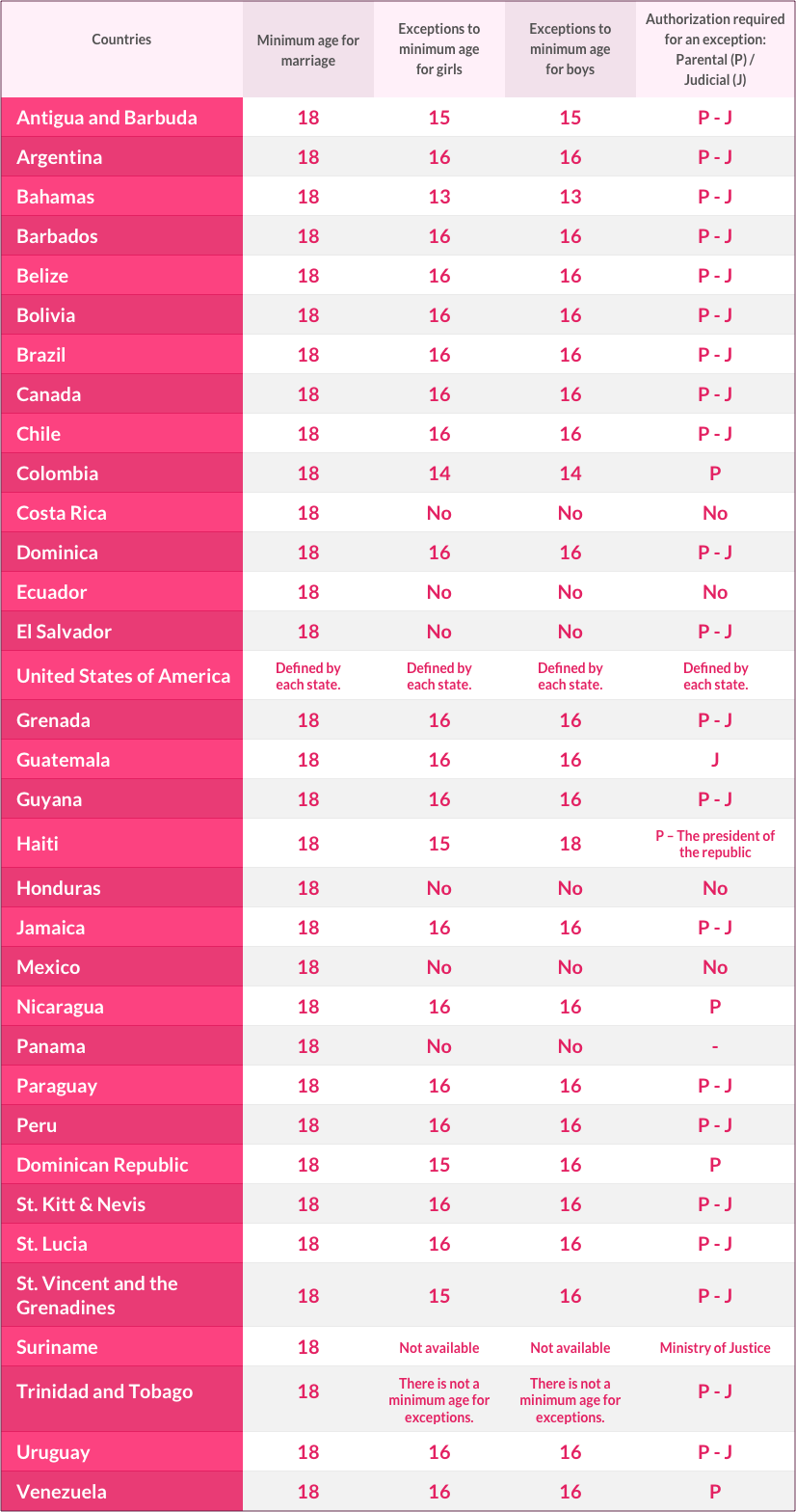Regional context
In the last two decades, Latin American countries have worked together – at the regional and global level – in campaigns to denormalize and name the forms of violence lived by women, girls, LGBT people and other vulnerable groups. During this time, several important changes have taken place, such as the treatment of domestic violence and violence between intimate partners, the definition of femicide (which was called “crime of passion”) as a crime on its own, the elimination of measures that criminalized homosexuality (Panama was the last country to do so in 2018), and the creation of laws to end discrimination based on sexual orientation and gender identity – although the latter is less common. On the other hand, Mexico, Guatemala, El Salvador, Belize, Panama, Colombia, Ecuador and Suriname still have laws that criminalize certain aspects of the exposure to HIV, the non-disclosure and/or transmission of the virus.
In this region, the legal age of consent and the minimum age for marriage are two important criteria that could have implications and a direct effect on the lives and sexual and reproductive rights of adolescents. .
In most countries there is a minimum age for marriage, and exceptions are provided for younger people, who require judicial or parental authorization. Few countries won’t allow marriage under the legal age. Child marriage and early marriage are a reality in the region and some strategies to fight it are based on punishment and have an impact on the lives and autonomy of children and adolescents.
Click here to get the accessible version of the table.


The minimum age of legal consent is the age at which adolescents can legally consent to sexual acts. Any sexual activity under this age is considered punishable.
Click here to get the accessible version of the chart.


Source of the chart:
Diagnóstico sobre legislación y políticas públicas sobre matrimonio infantil y uniones tempranas en las Américas. Washington, DC: Comisión Interamericana de Mujeres, Organización de los Estados Americanos, 2019. [In Spanish]
The Montevideo Consensus (Consenso de Montevideo) acknowledges that childhood, adolescence and youth are key stages in the life and development of an individual. It also points out that public actions with a perspective of human rights have been limited and that the current demographic situation in the region demands giving opportunities and guaranteeing the rights of people in these stages of life. It also takes note of the commitment to address the specific needs of adolescents and youth, with special concern about the high and uneven levels of pregnancy in adolescents in the region, usually related to forced marriage, abuse and sexual violence, particularly for girls under 15 years old.
In Mira Que Te Miro you will find a cross-sectional analysis of a Latin American zoning to identify the progress achieved in the development of legal frameworks and policies to guarantee adolescents’ sexual and reproductive rights. It was found that the countries that better comply with the commitments assumed in the Montevideo Consensus concerning comprehensive sex education, sexual and reproductive health friendly services, programs to avoid school drop-out and to address gender-based violence, are those who show the best sociodemographic indicators related to the sexual and reproductive rights of adolescents. However, there are still gaps to fill so that the policies are comprehensive and cross-sectional and the full exercise of the rights of adolescents in Latin America and the Caribbean is protected.
Visit:
Download: